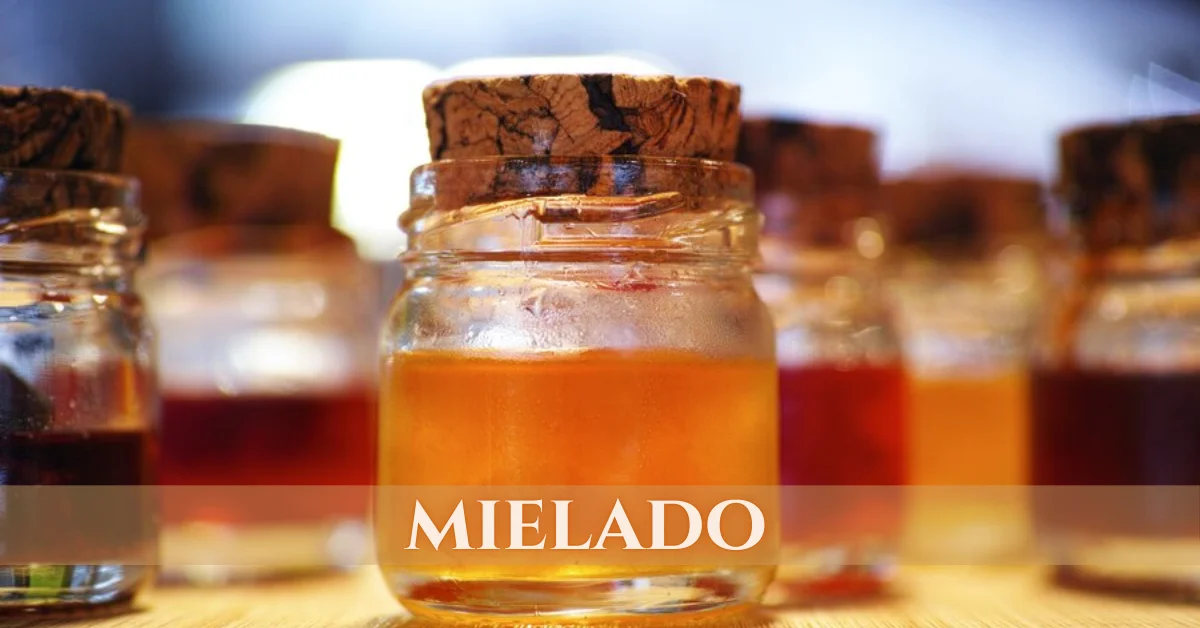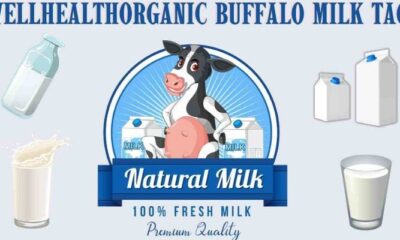Health
Tamisie: Everything You Need To Know

In the ever-evolving world of gastronomy, Tamisie, a term that might not be familiar to many, is making its mark. This comprehensive guide aims to demystify Tamisie and provide you with all the essential information about its origins, uses, and why it’s becoming increasingly popular among chefs and food enthusiasts alike.
You’ve heard of tamisie, right? It’s the hottest new food trend that everyone’s talking about. But what exactly is tamisie and why should you care? Well, grab a snack and get comfortable because you’re about to find out everything you need to know about this delicious dish taking the culinary world by storm. Tamisie originates from a small region in Peru, where locals have been cooking and enjoying it for generations. Made from a special type of potato, tamisie gets its signature purple hue and nutty flavor from a rare heirloom variety that’s packed with antioxidants. Once the potatoes are harvested, they’re ground and mixed with a variety of spices to create tamisie’s distinctive taste. Keep reading to uncover the fascinating history behind tamisie, learn how it’s made, and find recipes to whip up this Peruvian delicacy in your own kitchen. Your taste buds will thank you.
What is Tamisie?
Tamisie, derived from the culinary arts, is a concept that encapsulates both a technique and the products related to a specific method of food preparation or ingredient manipulation. It’s a term that might refer to a unique cooking method, a special ingredient treatment, or a culinary innovation, depending on the context in which it’s used. While the term itself might not be widely recognized outside professional kitchens or the circles of culinary aficionados, the principles of Tamisie are often rooted in traditional cooking practices that have been refined or rediscovered to enhance flavor, texture, or presentation.
Origins and Evolution
The concept of Tamisie does not trace back to a singular origin or cuisine; instead, it represents a confluence of culinary traditions and innovations that have been adapted and refined over time. It may draw from ancient cooking methods that have been overlooked and reintegrated into modern cuisine with a new twist, or it could emerge from the experimental approaches of contemporary chefs pushing the boundaries of gastronomy.
Techniques and Applications
Tamisie can encompass a variety of techniques ranging from fermentation, dry-aging, and smoking to more avant-garde methods like molecular gastronomy. The essence of Tamisie lies in its ability to transform the ordinary into the extraordinary through a meticulous process of preparation or ingredient manipulation. For example, a Tamisie technique might involve a unique way of fermenting grains to create a novel flavor profile in bread or using precision temperature control to achieve the perfect texture in meats.
Why Tamisie Matters
Culinary Innovation
Tamisie represents the pinnacle of culinary innovation, allowing chefs to experiment with flavors, textures, and presentations. It provides a platform for creativity and experimentation, pushing the boundaries of what is possible in the kitchen.
Flavor Enhancement
Through the various techniques associated with Tamisie, chefs can unlock deep, complex flavors in ingredients that might otherwise be unremarkable. This enhances the dining experience, offering patrons unique and memorable dishes.
Sustainability
Many Tamisie methods involve using the entirety of an ingredient or revitalizing traditional practices that are inherently sustainable. This aspect of Tamisie is increasingly important in a world where food production and waste are critical environmental issues.
Cultural Preservation
Tamisie also plays a role in preserving culinary traditions by reintroducing ancient techniques and ingredients to new audiences. This not only enriches the global culinary landscape but also helps to maintain cultural heritage.
What Is a Tamisie?
A tamisie is an ancient stringed instrument originating from Asia. It resembles a zither, with strings stretched over a wooden soundboard. The strings are plucked with the fingers to produce mellow, calming notes.
The Parts of a Tamisie
The main parts of a tamisie are:
- The soundboard: A flat, hollow wooden base that amplifies the sound
- Bridges: Raised wooden pieces that lift the strings above the soundboard
- Strings: Made of silk, nylon or steel. The strings are different lengths, producing different notes.
- Tuning pegs: Adjustable pegs used to tune each string to the proper pitch.
How a Tamisie Makes Sound
When a string is plucked, it vibrates. The vibration causes the soundboard to vibrate, which amplifies the sound. The pitch of the note depends on the thickness and length of the string. Shorter, thinner strings produce higher pitches while longer, thicker strings produce lower pitches.
Playing a Tamisie
To play a tamisie, sit with the instrument on your lap or a table. Rest your left hand on the soundboard to dampen unwanted string vibrations. Use the fingertips of your right hand to pluck the strings, either individually or together to create chords and melodies. Plucking closer to the bridge produces a crisper tone, while plucking closer to the tuning peg produces a mellower tone.
With practice, you can master simple songs and pieces on the tamisie. Its calming, melodic sound has made it popular for meditation, relaxation and stress relief. Discover the peaceful tones of this charming instrument.
The History and Origins of the Tamisie
The tamisie plant has been cultivated for centuries and has a rich history.
Origins in Asia
Tamisie plants are native to tropical Asia, specifically the Philippines and Indonesia. They were first cultivated by farmers in the 14th century and were prized for their beautiful pink flowers and unique tropical look. The plants were seen as a symbol of love and friendship and were commonly given as gifts.
Introduction to the West
European explorers first encountered tam-isie plants in the late 1700s and brought them back to Europe, where they became popular among collectors and botanists. In the Victorian era, tam-isie plants were a coveted decoration and a sign of wealth and culture.
Modern Uses
Today, tamisie plants are a staple of tropical-themed home decor and landscaping. Their pink blossoms and large, emerald-colored leaves evoke a sense of paradise. Tamisie plants are also used in the floral industry for bouquets, wreaths and leis.
While tamisie plants have a long and fascinating history, they have endured because of their unparalleled beauty. With the right care and conditions, a tam-isie plant can live for decades and produce thousands of flowers, allowing you to enjoy a little piece of the tropics for years to come.
How a Tamisie Works to Filter Ingredients
A tamisie is a culinary tool used to strain and filter ingredients. It works by passing ingredients through a fine mesh screen, allowing only particles of a certain size through. This leaves you with an end result of evenly sized ingredients. Tamisies come in different mesh sizes for different uses.
How It Works
A tamisie consists of a round wooden or metal frame with a fine mesh screen attached. The screen can be made of materials like stainless steel, nylon, or silk depending on how fine you need the filter to be.
To use a tamisie, place it over a bowl and add your ingredients to the mesh screen. Gently shake, swirl, and press the ingredients against the screen using a spatula or spoon. The filtered particles will fall through into the bowl below, while larger bits remain on top of the screen. For wet ingredients, you may need to scrape off any remaining residue from the top of the screen when done.
Common Uses
- Sifting flour or powdered sugar to remove lumps and ensure an even, airy consistency.
- Straining stocks, broths or sauces to achieve a smooth texture.
- Rinsing quinoa, farro or rice to remove dirt or debris before cooking.
- Filtering juice pulp when making fresh juices at home.
- Sifting spices like cinnamon or cocoa powder which tend to clump over time.
A tamisie is a handy tool to have in any home kitchen. It allows you to refine and improve the quality of many ingredients and the end results of your cooking and baking. With the different mesh sizes available, you can find a tamisie suitable for any of your culinary needs.
Common Uses for a Tamisie in Cooking and Baking
A tamisie is a handy kitchen tool that has many uses in cooking and baking. Its fine mesh is perfect for straining, sifting, and ricing.
Straining stocks and broths
A tamisie is ideal for straining homemade stocks, broths, and consommés. Place it over a pot or bowl and pour the liquid through. The mesh will catch any solids, leaving you with a clear liquid. This method is superior to using a colander alone.
Sifting flour and powdered sugar
Sifting flour, powdered sugar, and other dry ingredients aerates them and breaks up any lumps, resulting in lighter and fluffier baked goods. Place the tamisie over a bowl and add the ingredient. Gently work it through the mesh using a spoon or brush. Be sure to sift flour for cakes, cookies, pastries, and anything where texture is important.
Ricing potatoes
To rice potatoes, cook them, then mash while still hot and press through a tamisie. The fine mesh will give you light and fluffy mashed potatoes. Use a spoon or spatula to force the potatoes through. Rice them while hot for the best results. Riced potatoes are also great for topping shepherd’s pies or mixing into other dishes.
Puréeing and straining
A tamisie can be used to strain chunky purées, sauces, and preserves into a smooth texture. Simply work the mixture through the mesh using a spoon or spatula. You can also purée ingredients directly in the tamisie using a spoon to mash them through. This works well for making smooth applesauce, berry purées, and tomato sauces.
With so many handy uses, a tamisie is a useful tool to have in any home kitchen. Keeping one on hand will make many of your cooking and baking tasks quicker and easier while also improving your results.
Tips for Using a Tamisie Successfully in Your Kitchen
To get the most out of your tamisie, follow these tips:
Season it well
A tamisie is essentially a sieve, so its purpose is to strain and separate. For the best results, choose ingredients that will yield flavorful results when strained, like fresh herbs, spices, citrus peels or aromatics. Some classic combinations include:
- Rosemary, thyme and lemon zest
- Cinnamon sticks, whole cloves, and nutmeg
- Fresh basil, oregano, garlic and crushed red pepper flakes
Prepare the ingredients
Make sure any dried ingredients are fresh. For citrus peels or other aromatics, wash thoroughly and pat dry before adding to the tamisie. For fresh herbs, give them a quick chop to release their essential oils and flavors before adding to the tamisie.
Choose your liquid
The liquid you strain through the tamisie will become infused with the flavors of the ingredients. Popular choices include:
- Olive oil: For herb-infused oils, salad dressings or marinades
- Vinegar: For homemade flavored vinegars to use in salads or pickling
- Brandy or bourbon: For homemade flavored liqueurs
- Sugar syrup: For flavored simple syrups to use in cocktails or lemonade
Strain and press
Place your tamisie over a bowl to catch the strained liquid. Pour your liquid over the ingredients in the tamisie. Use a spoon to press down on the ingredients to squeeze out as much of the flavored liquid as possible. Discard the used ingredients.
Bottle and enjoy!
Pour your infused liquid into sterilized bottles or jars. Seal and store in a cool, dark place. Most infused oils and vinegars will last for several months. Flavored spirits and syrups will last for several years. Enjoy in your favorite recipes or craft cocktails!
With these tips, you’ll be creating amazing infused ingredients with your tamisie in no time. Happy straining!
Conclusion
Tamisie, while not a household name, is a concept that is influencing the future of food in profound ways. By embracing the principles of Tamisie, chefs and food enthusiasts can explore a world of culinary possibilities that extend beyond traditional boundaries. Whether it’s through the revival of ancient techniques or the invention of entirely new ones, Tamisie is a testament to the limitless potential of human creativity in the culinary arts. As we continue to explore and understand the depths of Tamisie, we can look forward to a future where food is not just sustenance, but an ever-evolving art form.
Health
Transformative Advances in Medical Device Innovation

Key Takeaways
- The medical device sector is quickly advancing with state-of-the-art technologies.
- Trends such as AI integration and wearable technology are gaining prominence.
- Regulatory challenges are significant but necessary for ensuring safety and efficacy.
- Innovations continue to transform patient care, making treatments more personalized and effective.
Table of Contents
- Introduction to Medical Device Innovation
- Latest Trends in Medical Devices
- Challenges Facing the Industry
- Impact on Patient Care
- Role of Regulations
- Future Possibilities
Introduction to Medical Device Innovation
Medical devices are in a continuous flux, propelled by a relentless pursuit of enhanced healthcare outcomes. From implantable cardioverter defibrillators to robotic surgical assistants, advancements in advanced medical products have fundamentally redefined traditional approaches to patient care. These devices incorporate sophisticated technologies designed to improve medical treatments’ accuracy, efficiency, and personalization. As these innovations continue to develop, they open new avenues for patients and healthcare providers. Measurable shifts towards non-invasive solutions and more personalized care plans have been witnessed across various medical disciplines. Concepts that once seemed futuristic are now realities, bridging gaps between imagination and implementation, thus reflecting the foresight and ingenuity of modern medical engineering.
Latest Trends in Medical Devices
The intersection of artificial intelligence and wearable technology drives the current pace of medical device development. Devices today possess capabilities far beyond their predecessors, incorporating AI to analyze and interpret massive amounts of health data in real-time with unprecedented accuracy and speed. This integration assists healthcare providers in diagnosing and empowers patients with real-time insights into their health, facilitating proactive management of personal healthcare.
Moreover, wearable devices are setting a new standard in personalized healthcare. These devices, able to track various physiological indicators like heart rate, oxygen saturation, and even stress levels, are becoming widespread. They enable continuous, real-time health monitoring, transforming chronic disease management into a more interactive and patient-centered process. Smart wearables are significantly enhancing the ability of individuals to manage long-term health conditions, fostering an era of informed and engaged healthcare consumers.
Challenges Facing the Industry
While the medical device industry is flush with innovation, it has. Chief among these are financial investment requirements and the complexity of navigating regulatory landscapes. Bringing a new device to market demands rigorous compliance with global safety standards, a process that is both time-intensive and resource-intensive. These regulatory processes are essential for ensuring the safety and efficacy of medical devices but can also present barriers to rapid technological adoption. Achieving a compromise between promoting innovation and protecting public health is essential. It involves crafting policies that support technological advancements while maintaining strict safety protocols to protect end-users from potential risks associated with new technologies.
Impact on Patient Care
Advancements in medical devices have brought about substantial improvements in patient care, reshaping the landscape of treatment options available. Cutting-edge diagnostic tools and treatment devices are enhancing the precision of medical interventions, reducing the need for invasive procedures, and accelerating recovery times. Personalized device settings are particularly advantageous, allowing treatments to be tailored to individual needs, thereby offering customized care strategies that significantly improve patient outcomes. The integration of technology in healthcare is yielding remarkable results. Technological interventions are dramatically improving chronic disease management strategies, increasing patient engagement and satisfaction. This proactive approach to healthcare allows for continuous monitoring of health metrics, allowing prompt actions and promoting improved dialogue between patients and healthcare professionals.
Role of Regulations
Regulations play a critical protective role in the medical device industry. They ensure that every product undergoes comprehensive safety evaluations before being introduced to the market, thus preventing adverse outcomes and helping to build trust among healthcare professionals and patients alike. Fulfilling regulatory standards can be intimidating, but it is essential to harmonize innovation with user safety. As technological advancements accelerate, regulations must evolve, maintaining relevance in safeguarding patient health while supporting the pace of innovation. This adaptation is necessary to accommodate emerging technologies and novel therapeutic approaches within the scope of existing healthcare frameworks.
Future Possibilities
Forging ahead, the future potential of medical devices is vast and inspiring. New technologies herald a new age of innovative solutions, potentially offering unprecedented improvements to healthcare systems worldwide. As the scope for medical device applications continues to expand, these innovations provide opportunities to revolutionize efficiency and accessibility in healthcare. The future holds promise for more effective preventive care, improved diagnostic accuracy, and personalized treatment plans, moving toward an era of more innovative, safer, and more patient-focused healthcare experiences. Through ongoing investment and research, these prospects are nearing the status of the ordinary, blurring the distinction between science fiction and medical reality.
Health
Mielado: The Sweet Essence of Nature

Nature’s most exquisite gifts often come in small, Mielado unassuming forms, yet hold within them the potential to captivate our senses and nourish our souls. Among these treasures is mielado, a term that may be unfamiliar to some but carries the rich and ancient legacy of honey in its purest, most unadulterated form. Derived from the Spanish word miel (honey) and the suffix -ado (meaning “full of” or “consisting of”), mielado is a celebration of honey as a natural, unprocessed wonder that reflects the beauty of the world’s landscapes in every drop.
What is Mielado?
Mielado refers to honey that is as close to its natural state as possible. Unlike most commercial honeys, which often undergo processes of pasteurization and filtration, mielado is typically raw, unfiltered, and free from additives. This type of honey is harvested directly from the hive and bottled with minimal intervention, preserving all the natural enzymes, antioxidants, vitamins, and minerals that make honey such a revered superfood.
The term “mielado” is often used in Spanish-speaking regions, but the practice of consuming raw, unprocessed honey is common across cultures around the world, with variations such as raw honey, wild honey, or artisan honey also being used to describe this pure form of sweetness.
The Origins and Tradition of Mielado
Honey has been used by humans for thousands of years, with evidence of its consumption dating back to ancient Egypt, Mesopotamia, and Greece. Historically, honey was not only valued for its sweetness but also for its medicinal properties. Ancient civilizations considered honey a precious substance, using it to heal wounds, soothe sore throats, and even preserve fruits and meats.
In more recent centuries, as modern agricultural and processing techniques have evolved, many of the nutritional and medicinal benefits of honey have been diluted through mass production. However, a return to more sustainable and traditional practices has sparked a renewed interest in raw and unfiltered honey, especially varieties like mielado, which capture the essence of the land from which they come.
Mielado is often associated with small-scale, local beekeeping. These beekeepers typically use ethical and sustainable methods, allowing bees to thrive in natural environments and ensuring the preservation of biodiversity. This type of honey is often produced in specific regions, where the flora and climate play a critical role in shaping its flavor and properties.
The Unique Characteristics of Mielado
A Symphony of Flavors
One of the most captivating qualities of mielado is its rich and complex flavor profile. The taste of mielado varies greatly depending on the nectar sources available to the bees. These sources could include wildflowers, herbs, fruits, or even specific trees such as acacia, chestnut, or eucalyptus. As a result, each batch of mielado is unique, with subtle variations in flavor, color, and texture.
For example:
- Wildflower mielado might have a floral, slightly fruity taste with a smooth texture.
- Eucalyptus mielado may have a more robust, earthy flavor with a slight medicinal undertone.
- Chestnut mielado can be darker, with a rich, almost savory note.
This diversity of flavors is part of what makes mielado so special. Each jar contains a snapshot of the landscape where the bees have foraged, offering a direct connection to the land.
Nutritional Benefits
Mielado isn’t just a treat for the taste buds—it’s also a powerhouse of nutrients. Raw, unprocessed honey retains a wealth of health benefits that are often lost in commercial processing. These include:
- Enzymes: These help with digestion and provide antibacterial and antifungal properties.
- Antioxidants: Mielado contains polyphenols, which are compounds known to reduce oxidative stress and inflammation.
- Vitamins and Minerals: Raw honey is a source of essential vitamins like B vitamins and minerals such as potassium, calcium, and magnesium.
- Amino Acids: Honey contains trace amounts of amino acids, which are the building blocks of proteins and important for overall health.
The combination of these nutrients makes mielado an excellent natural remedy for soothing sore throats, boosting energy, or simply sweetening your tea with a touch of nature’s magic.
Healing Powers of Mielado
In addition to its nutritional properties, mielado has been long prized for its medicinal uses. Honey has natural antibacterial and antifungal properties, which make it effective in treating wounds and burns when applied topically. Raw honey has also been studied for its ability to alleviate coughs and colds, and its antimicrobial effects can help balance the gut microbiome, promoting digestive health.
Some varieties of mielado, such as manuka honey from New Zealand, are especially known for their potent medicinal qualities due to the unique properties of the nectar collected by the bees. While not all mielados have the same medicinal effects, consuming raw honey can still offer a wide array of health benefits, making it a valuable addition to a balanced diet.
The Ecological Importance of Mielado
Mielado is not just a culinary delight or a health supplement—it is also a symbol of the vital role bees play in the environment. Bees are essential pollinators, and their work helps to maintain biodiversity and supports the agricultural systems that humans rely on for food production.
By choosing mielado, consumers are often supporting beekeepers who are committed to sustainable, eco-friendly practices. These beekeepers typically prioritize the health and welfare of their bee colonies, using methods that minimize harm to the environment and promote the flourishing of local ecosystems.
Supporting Local Beekeepers and Ecosystems
When purchasing mielado, it’s important to consider the source. Many artisanal honey producers operate on a small scale, relying on local, organic practices to ensure the quality and sustainability of their honey. By supporting these beekeepers, you contribute to the preservation of traditional methods, the welfare of bees, and the health of the local environment.
Mielado is often sold in small, locally produced batches, with each jar telling the story of the flowers, trees, and bees that contributed to its creation. It’s a reminder that food is not just about taste—it’s about connection to the land and the ecosystems that sustain us.
How to Enjoy Mielado
Mielado can be savored in many ways, adding depth and complexity to your culinary experiences:
- As a sweetener: Drizzle it over toast, pancakes, or waffles. Add a spoonful to your morning tea or coffee for a natural, flavorful sweetener.
- In cooking: Mielado pairs beautifully with cheeses, fruits, and nuts. Use it to glaze meats, such as chicken or salmon, or mix it into salad dressings for a touch of sweetness.
- In skincare: Apply raw honey directly to the skin as a moisturizing mask, or mix it with other natural ingredients to create exfoliating scrubs.
- In health tonics: Combine mielado with lemon and warm water for a soothing drink that can help with digestion and boost immunity.
Mielado is more than just honey—it is an experience, a reminder of the sweetness and purity of nature, and a link to a time when food was closely tied to the land.
Conclusion: A Taste of Nature’s Bounty
Mielado is a testament to the artistry and dedication of beekeepers who cherish the land and the bees that give us this precious gift. By enjoying this sweet essence of nature, we not only treat ourselves to a healthier, more flavorful food but also support sustainable practices that help protect the environment.
In a world that often seems disconnected from the rhythms of nature, mielado offers a simple but profound way to reconnect with the earth, savoring its rich, complex flavors and appreciating the work of the tiny creatures that make it all possible. Whether you’re a connoisseur of fine foods, a health enthusiast, or someone simply seeking a taste of nature’s best, mielado invites you to experience the sweet essence of the world around us.
Health
Zyliss 92705 Cheese Grater: Effortless Kitchen Tool

Cheese lovers know the charm of freshly grated cheese –Zyliss 92705 it can instantly elevate a dish, adding a burst of flavor and texture that pre-packaged cheese just doesn’t match. The Zyliss 92705 Cheese Grater is one of those rare kitchen gadgets that offers efficiency, comfort, and quality in one handy tool. Whether you’re a seasoned chef or a home cook, this cheese grater could be the perfect fit for your kitchen.
Why a Quality Cheese Grater is a Kitchen Essential
The Convenience of Freshly Grated Cheese
Freshly grated cheese melts better and tastes fresher compared to pre-grated options, which often come with anti-caking agents. A quality cheese grater ensures you get freshly grated cheese whenever you need it.
Health Benefits of Grating at Home
Using a grater at home can help you avoid preservatives and other additives, allowing you to enjoy cheese in its purest form. Plus, it’s cost-effective and minimizes plastic waste.
Overview of the Zyliss Brand
A History of Innovation in Kitchen Tools
Zyliss, a Swiss brand, is known for creating durable and functional kitchen tools. Established over 60 years ago, Zyliss has a legacy of providing kitchen solutions that last.
What Sets Zyliss Apart
Zyliss focuses on user-friendly designs that simplify kitchen tasks. Their commitment to quality and attention to detail make Zyliss tools reliable and innovative.
Features of the Zyliss 92705 Cheese Grater
Ergonomic Design
This cheese grater is designed for comfort. It’s easy to hold, even when grating larger amounts of cheese, reducing strain on your hands.
Sturdy Build Quality
The Zyliss 92705 is made from high-quality materials that withstand regular use. Its durable build ensures it won’t crack or bend under pressure.
Safe and Efficient Blade Mechanism
The grater’s stainless steel drum is sharp yet safe. Its design allows for efficient grating without posing a risk of accidental cuts.
Advantages of the Zyliss 92705 Cheese Grater
Quick and Effortless Grating
This grater requires minimal effort to use, thanks to its sharp blade mechanism. Just a few turns, and you have freshly grated cheese ready to go.
Minimal Cleanup Required
The Zyliss 92705 is easy to clean, making it ideal for busy kitchens. It also reduces the hassle of cleaning up large, clunky appliances.
Versatile Grating Options
Not only for cheese, but this grater also handles nuts, chocolate, and more, making it a multipurpose tool in the kitchen.
How to Use the Zyliss 92705 Cheese Grater
Step-by-Step Guide
- Prepare Your Cheese: Cut the cheese block into pieces that fit easily into the grater.
- Load and Secure: Place the cheese in the hopper, secure the top, and begin turning.
- Grate with Ease: Turn the handle to grate cheese into fine, even pieces.
Pro Tips for Best Results
- Choose the Right Cheese: Hard cheeses work best with this grater.
- Use in Small Batches: This avoids clogging and ensures smooth grating.
Maintenance and Cleaning Tips
Dishwasher Safe Parts
The grater’s drum and handle are dishwasher-safe, making cleanup a breeze.
Manual Cleaning Tips
For hand-washing, use a small brush to clear out any residue. Avoid soaking the grater for too long to maintain its quality.
Comparison with Other Cheese Graters
Manual vs. Electric Cheese Graters
Manual cheese graters like the Zyliss 92705 give more control, are more compact, and don’t require electricity. Electric graters, on the other hand, may be faster but come with a higher price tag.
How Zyliss Stands Out
Zyliss offers a balance of efficiency, durability, and affordability, making it a preferred choice for many home cooks.
Ideal Uses for the Zyliss 92705 Cheese Grater
Perfect for Various Cheese Types
This grater works best with hard cheeses like Parmesan but is also effective with softer varieties.
Great for Hard Chocolates, Nuts, and More
Beyond cheese, use this grater for ingredients like nuts or chocolate, adding variety to your culinary options.
Customer Reviews and Testimonials
Positive Feedback Highlights
Customers praise the Zyliss 92705 for its durability and ease of use. Many mention how comfortable the handle feels, even when grating larger amounts.
Any Drawbacks to Consider
Some users note that soft cheeses can be a bit more challenging to grate, but overall, the feedback is highly positive.
Where to Buy the Zyliss 92705 Cheese Grater
Popular Retailers and Online Options
You can find the Zyliss 92705 Cheese Grater on platforms like Amazon, Walmart, and directly from Zyliss’s website. Checking multiple retailers can help you find the best price and shipping options.
Conclusion
The Zyliss 92705 Cheese Grater is a handy kitchen tool that brings the convenience of freshly grated cheese right to your table. Its ergonomic design, sharp blade, and sturdy build make it a reliable option for anyone who values quality and efficiency in their kitchen gadgets. Whether you’re grating cheese, chocolate, or nuts, this tool is versatile and easy to use, making it a worthy addition to any kitchen.
FAQs
Q1: Can the Zyliss 92705 Cheese Grater handle soft cheeses?
Yes, although it’s most effective with hard cheeses, it can also handle softer varieties with a bit of extra care.
Q2: Is the Zyliss 92705 Cheese Grater dishwasher-safe?
Yes, its parts are dishwasher-safe, making it easy to clean.
Q3: Can I use this grater for ingredients other than cheese?
Definitely! It works well with hard chocolates, nuts, and more.
Q4: Where can I buy replacement parts for the Zyliss 92705?
Replacement parts are available on the Zyliss website and from select online retailers.
Q5: How does the Zyliss 92705 compare to electric cheese graters?
It’s compact, doesn’t require electricity, and offers precise control over grating – ideal for most home kitchens.
-

 Tech2 years ago
Tech2 years agoUnderstanding ПРЕВОДЕЧ: Unlocking Global Communication
-

 Tech2 years ago
Tech2 years agoGeekzilla.tech Honor Magic 5 Pro: Unveiling the Technological Marvel
-

 Blog2 years ago
Blog2 years agoGeekzilla Autos: Everything You Need To Know
-

 Blog2 years ago
Blog2 years agoGeekzilla Podcast: A Journey into Geek Culture
-

 Health2 years ago
Health2 years agoWellHealthOrganic Buffalo Milk Tag: Your Nutrient-Rich Dairy Upgrade
-

 Health2 years ago
Health2 years agoWellhealth how to build muscle Tag: Complete Guide
-

 Blog2 years ago
Blog2 years agoTips for Breaking Into the Restaurant Industry
-

 Tech2 years ago
Tech2 years agoPikruos is a Leading Provider of Innovative IT Solutions
